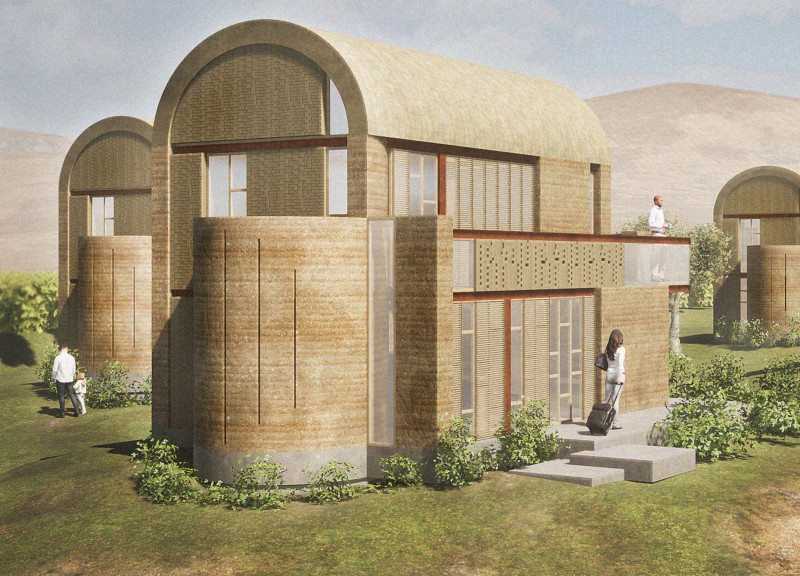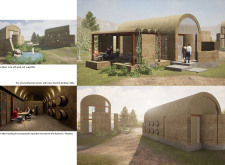5 key facts about this project
La Casa del Vino is located in Perugia, Italy, and was designed for Tili Vini winery. The project emphasizes sustainability and a strong connection with the landscape. Comprising five houses, a wine tasting area, and an outdoor space that features a pool and vegetation, the design highlights how architecture can harmonize with nature while serving its function.
Design Concept
The design focuses on using traditional earthen construction techniques, which rely on locally sourced earth. This choice reflects a commitment to environmentally friendly practices. The earthen walls serve a dual purpose: they provide thermal comfort and help control humidity indoors. This strategy not only reduces energy use but also minimizes the overall impact on the environment.
Spatial Configuration
The arrangement of the buildings encourages both communal and private experiences. Each house has balconies and terraces oriented to overlook the Umbrian valley, promoting outdoor activities and social interaction. The thoughtful layout creates inviting spaces for relaxation while fostering a sense of community among visitors and the winery.
Natural Ventilation
Natural ventilation plays a crucial role in the design. Small openings are carefully positioned to allow airflow, creating a comfortable atmosphere without depending too much on mechanical cooling systems. Locally sourced shutters act as shading devices, reducing solar gain and improving energy efficiency, which contributes to a more pleasant indoor environment throughout the year.
Architectural Aesthetics
Architecturally, the project features vaulted walls that adapt to the natural terrain. This design element enhances the visual relationship between the buildings and their surroundings. Inside, the use of a double-height layout allows ample sunlight to fill the spaces, creating a sense of openness. The outdoor area includes a pool and landscaped gardens, highlighting the connection between indoor and outdoor settings. The wine tasting area integrates terraces and uses upcycled wine barrels for furniture, reinforcing the focus on sustainability while creating a welcoming atmosphere.






















































